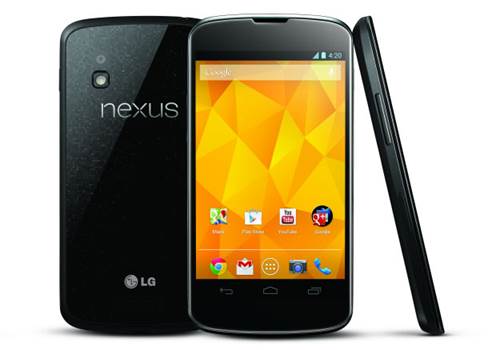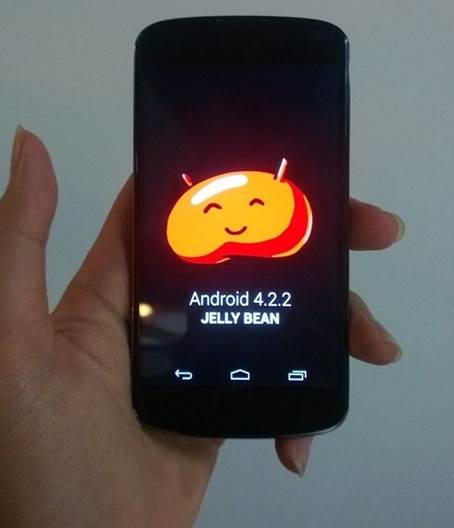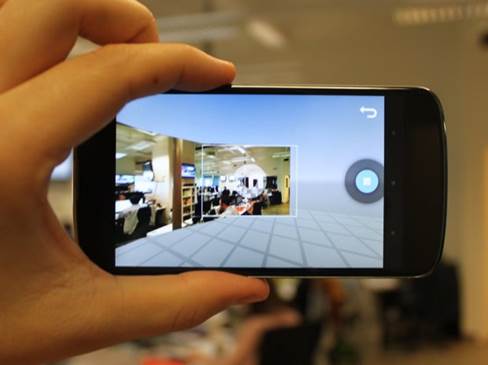Google typically molds each generation of
its Nexus-branded smartphones after the flagship model of a specific Android
partner. In the past, Google worked with both HTC and Samsung, releasing the G1
(a non-Nexus device which ended up as the HTC Dream), the Nexus One (which
became the HTC Desire), the Nexus S, and the Galaxy Nexus, of which the latter
two were made by Samsung. The Nexus 4 was inspired by the LG Optimus G, and
curiously bears a striking resemblance to its predecessor, the Samsung Galaxy
Nexus.

Taking a leaf out of Apple’s playbook, LG
equips the Nexus 4 with two pieces of Corning Gorilla Glass each on the front
and back. Our only gripe with the glass back panel is its tendency to pick up
dirt, smudges, and fingerprints quite easily.
The rest of the Nexus 4 not covered by
Gorilla Glass is a matte material that helps provide a more secure grip.
CoupLED with the smoothness and solid feel of the glass back, the handling of
the Nexus 4 is definitely comparable to (and some might say, better than)
today’s top Android smartphones.
As a Nexus-branded phone, the Nexus 4 runs
on the latest release of the Android operating system, version 4.2, also known
as Jelly Bean. Despite being a “0.1” incremental update, there are some new
features worth taking note of.

the
Nexus 4 runs on the latest release of the Android operating system, version
4.2, also known as Jelly Bean
Quick Settings, as the name suggests, is
simply a shortcut to brightness, settings, Wi-Fi, battery status, airplane
mode, and Bluetooth. Some shortcuts double-up as status indicators; for
example, you can tell at a glance if your Bluetooth connection is enabLED (or
otherwise).
Google has also added some life to the lock
screen with widgets. There are currently four widgets: calendar, digital clock,
Gmail, and messaging. Unlike home screen widgets, they are not resizable, and
you can only have one widget per screen panel.
Having widgets on the lock screen also
raises some security and privacy issues, as information can be seen without
unlocking the phone. For example, appointments on the calendar and first
sentence in your messages are visible. Therefore, we wouldn’t recommend that
you use lock screen widgets if data security and privacy are your top concerns.
Gmail is also enhanced for an optimal
viewing experience. To start, messages can be shrunk to fit the screen. In
addition, text can be zoomed in, and emails deleted or archived with a simple
swipe.
Android 4.2 has a screen saver feature
calLED Daydream, which can be activated upon charging or docking the phone. You
can choose from one of the five options available to use as a screen saver:
clock, colors, currents, photo frame, or table.
Paired with a Qualcomm Snapdragon S4 Pro
1.5GHz quad-core processor and 2GB of RAM, the Nexus 4 felt lightning fast in
operation with no sluggishness. Apps were responsive and snappy throughout. All
in all, the user experience is clearly a step up from other top Android
smartphones we’ve reviewed.

The
8-megapixel rear camera faiLED to impress as images lack the details and punchy
colors captured on other leading camera phones.
While previous generations of Nexus phones
had AMOLED displays, the Nexus 4 now comes with a 4.7-inch Super IPS+ display.
You can expect the same sharpness and accurate color reproduction on the Nexus
4 as on the ASUS PadFone 2.
The Nexus 4 is not without its flaws. The
lack of a memory card slot means that you have to make do with just the
existing internal storage, either 8GB or 16GB, depending on the model you
purchase. You won’t be able to use the entire 8GB (or 16GB) either, as some
space is taken up by the Android operating system itself.
The next drawback to the Nexus 4 is the
lack of 4G LTe connectivity, which was due to concerns over costs and battery
life, according to Google. The good news: Some enterprising enthusiasts found
that the LTe hardware is actually present on the Nexus 4, but disabLED, likely
awaiting a software update to turn it back on. The bad news: The Nexus 4 is
unlikely to work in some parts of the world as the LTe hardware appears to only
support Band 4 frequencies (i.e. 1700/2100MHz,on bandwidths of 5, 10, and
20MHz). If it’s any consolation, the Nexus 4 does support HSPA+ downlink speeds
of up to 42Mbps, which is already incredibly fast and more than enough for
regular usage.
The 8-megapixel rear camera faiLED to
impress as images lack the details and punchy colors captured on other leading
camera phones. Subpar image quality aside, the camera does have a new and
interesting feature calLED Photo Sphere. Photo Sphere is like taking a panorama
shot, but instead of panning in a fixed direction, you can essentially move the
camera in any direction. The interface will guide you to take aligned photos in
any direction before stitching them up. The end result is similar to what you
will see in Street View on Google Maps.

The
end result is similar to what you will see in Street View on Google Maps
Despite having very similar specifications
to the PadFone 2, the Nexus 4 faltered in our standard battery test with one of
the lowest battery uptimes seen yet at just six hours. Under normal use, the
battery had difficulties lasting the day. In addition, the glass back panel
felt warm after prolonged use. Knowing If this can be remedied by a software
update is something only time can tell.
Overall, the Nexus 4 is a mixed bag. It
performs well in some aspects, but doesn’t fare up to our standards in others.
Available through the Google Play Store at US$ 299 (8GB) and US$ 349 (16GB),
you will nevertheless be hard pressed to find an equal offering with a similar
overall package. Shortcomings aside, the Nexus 4 is a must-have for Android
purists who want the latest firmware updates from Google as soon as they come
out. However, if you value battery performance, imaging capabilities and 4G LTe
more, the Nexus 4 may fall a bit short on those aspects.
|
Specifications
§ OS:
Android 4.2
§ Size:
133.9 x 68.7 x 9.1 mm
§ Weight:
139g
§ Screen:
4.7in 1280 x 768 pixel resolution (320 ppi)
§ Processor:
Qualcomm Snapdragon S4 Pro (1.5GHz quad-core)
§ Storage:
8GB or 16GB (no removable storage)
§ Main
camera: 8-megapixels
§ Connectivity:
Wireless charging, Wi-Fi 802.11 b/g/n, NFC (Android Beam), Bluetooth
|